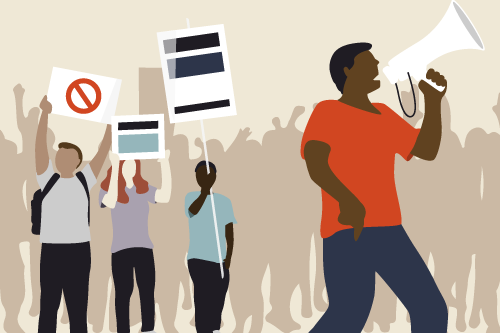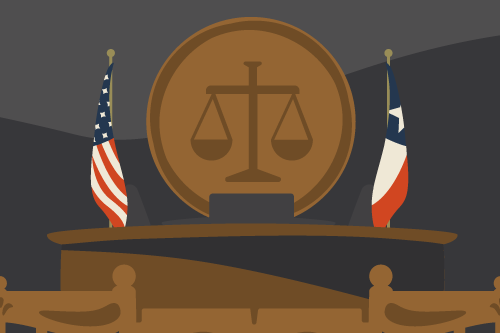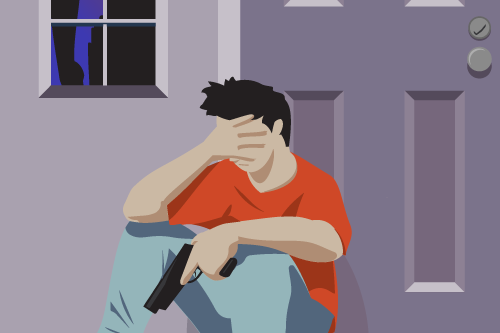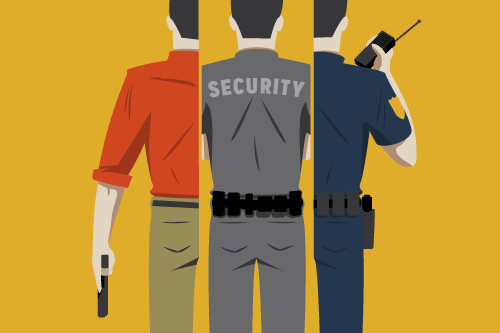Unholstered
When Texas Police Pull the Trigger
How often do Texas police shoot at people? No one knows.
As cities and neighborhoods across the nation suffer anguish — and in some cases violence — over controversial police shootings, in Texas there is little factual underpinning for discussions of police use of lethal force. Readily available, consistent, reliable information is virtually nonexistent.
The Texas Tribune spent nearly a year collecting data from the state’s 36 largest cities on every incident — not just high-profile or fatal shootings — in which police officers pulled the trigger between 2010 and 2015.
In just those cities, officers shot at someone an average of about once every three days, killing more than a third of them and injuring almost the same amount. People of color were more likely to be shot at, whether they were armed or not.
Each incident is unique and the situations vary dramatically, but the data presents the clearest picture yet of when and why Texas police unholster their weapons.
Here are the biggest takeaways based on shootings the Tribune was able to confirm.
Police shot at people in at least 656 incidents in Texas’ largest cities between 2010 and 2015. Each square represents one shooting.
That’s according to data from 36 cities, each with populations greater than 100,000, that make up almost half of the state’s population.
At least 247 of those shootings were fatal. That’s nearly 38%.
Another 239 caused nonfatal injuries. In at least 152 incidents, police missed their targets. Six shootings ended in suicides, and in 12 the details are unclear.
During that six-year span, data compiled by the FBI shows at least eight law enforcement officers from the departments the Tribune examined were killed on the job.
FBI data, which relies on voluntary reporting by local police, also shows that 47 others were injured by a gun or knife. Injuries by vehicle were not provided.
National and state-by-state statistics on fatal police shootings are incomplete.
For nonfatal shootings, data is virtually nonexistent, making it difficult to determine whether Texas officers shoot at disproportionate rates; the records gathered by the Tribune offer the first extensive look at when officers feel compelled to shoot.
The Tribune categorized the 656 shootings into 14 categories, based on police reports and — when reports were withheld — news articles.
Police shootings most often occurred after a robbery call or investigation, accounting for about 10% of the incidents.
Traffic stops — often cited anecdotally as high-risk interactions leading to police shootings — were the fourth-most common incident.
37 shootings — or about 6% of incidents — began with police responding to a mental crisis call.
26 of those incidents involved a person threatening suicide. Police killed the individual in 19 of the 26 cases.
In the 656 shootings, 737 people were shot at by police. Some shootings involved multiple individuals.
We were able to determine the race for 686 individuals — 280 of whom were black. That’s almost 41%.
That’s compared with the 14% of the population that is black in the cities we studied.
It’s difficult to track shootings involving Hispanics because not all departments distinguish between race and ethnicity.
Just over half of officers involved in the 656 shootings — 468 of the 823 where race was known — were listed as white.
Police departments listed 232 as Hispanic and 96 as black. Race was not provided for almost 60 officers.
In at least 109 shootings — almost 17 percent — police fired at an unarmed person.
In almost half of those cases where race was known — 47 shootings — the unarmed individual was black.
The rest were more likely to be Hispanic than white, and in seven cases, race was unknown.
In 66 shootings, the officers involved were off duty, often working security at a bar or store.
Eleven officers shot at burglars at their homes or while being mugged, in incidents that were still investigated as police shootings.
In the 656 shootings, 880 officers were involved.
In many cases, multiple officers fired at an individual during a shooting.
Of those 880 officers, the Tribune found 25 were disciplined by their departments. That’s less than 3%.
Ten were fired for their actions during a shooting. Fourteen were suspended, and one was given a written reprimand.
Seven officers have been indicted.
As of August 2016, five officers are facing criminal charges, Tribune research found. One officer was cleared by a federal judge. Another was acquitted by a jury.
None have been convicted.
What we still don’t know
Though the findings compiled by the Tribune are extensive, they are not comprehensive. Sporadic record-keeping across the state — and no uniform requirement to capture data on all shootings — further complicates use-of-force discussions and debates about the dynamics of police shootings.
Today, it remains impossible to determine exactly how many times and why police officers in Texas pull the trigger.
Produced by:
Jolie McCullough, Alexa Ura, Ryan Murphy and Ben Hasson
Find out more about this project and download complete data.
Feedback or questions? Email us at unholstered@texastribune.org.
Learn more about how you can support the Tribune’s investigative journalism.




